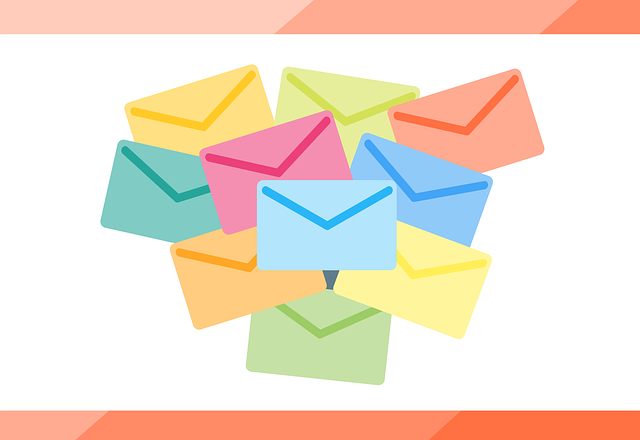Picture this: you’re sitting at your desk, surrounded by piles of papers and a never-ending to-do list. The phone rings, interrupting your thoughts, and you answer it with a sigh. But instead of another mundane task or a telemarketer on the other end, you’re greeted with an opportunity.
An opportunity to revolutionize your email campaigns and take them to new heights of success.
Welcome to the ultimate checklist for successful transactional email campaigns. In this article, we’ll show you how to craft subject lines that make your readers’ hearts skip a beat, personalize your emails to make each recipient feel like a VIP, and optimize your email design and layout for maximum impact.
But it doesn’t stop there. We’ll also guide you through the treacherous waters of deliverability and spam filters, ensuring that your messages reach their intended destinations.
And of course, no checklist is complete without tracking key metrics and analyzing performance to fine-tune your campaigns.
Get ready to take your transactional email campaigns from ordinary to extraordinary. Let’s dive in and make magic happen.
Key Takeaways
- Craft compelling subject lines and use A/B testing to optimize them
- Personalize emails using customer data and segmentation to increase engagement
- Optimize email design and layout for desktop and mobile compatibility
- Continuously test and improve campaigns through A/B testing and data analysis
Craft Compelling Subject Lines
Crafting compelling subject lines is key to grabbing your audience’s attention and increasing the chances of them opening your transactional emails. To create effective call to actions, your subject lines should be concise, clear, and enticing. Use strong action verbs and power words that evoke an emotional response.
Additionally, implementing A/B testing strategies allows you to experiment with different subject lines and determine which ones yield the highest open rates. Test different variations, such as using personalization, urgency, or curiosity, to see what resonates best with your audience.
Once you’ve mastered crafting compelling subject lines, you can move on to personalizing your emails. By tailoring your content to each recipient’s interests and preferences, you can further engage them and drive better results.
Personalize Your Emails
When personalizing your emails, don’t just rely on generic templates – instead, use customer data to create unique and tailored messages. By leveraging email segmentation, you can divide your audience into smaller groups based on their preferences, behaviors, or demographics. This allows you to send targeted emails that resonate with each recipient.
Additionally, incorporating dynamic content in your emails can further enhance personalization. Dynamic content adapts to each individual, displaying different images, text, or offers based on their past interactions or interests.
Here’s a quick checklist to help you personalize your emails effectively:
- Gather and analyze customer data
- Segment your email list
- Craft personalized subject lines
- Use dynamic content to customize your message
- Test and optimize your personalized emails for better engagement.
Now that you know how to personalize your emails, let’s move on to optimizing the design and layout to make your messages even more impactful.
Optimize Email Design and Layout
To make your emails more impactful, optimize the design and layout by focusing on creating visually appealing content that captures the attention of your recipients. Use responsive templates that adapt to different devices, ensuring your emails look great on both desktop and mobile. Visual hierarchy is crucial in guiding the reader’s eye and emphasizing important information. Incorporate headings, subheadings, and bullet points to break up the content and make it easier to digest. Use a 3 column and 4 row table, like the one below, to add depth and present information in a clear and organized manner:
| Column 1 | Column 2 | Column 3 |
|---|---|---|
| Feature 1 | Benefit 1 | Example 1 |
| Feature 2 | Benefit 2 | Example 2 |
| Feature 3 | Benefit 3 | Example 3 |
| Feature 4 | Benefit 4 | Example 4 |
By optimizing your email design and layout, you’ll create visually appealing content that engages your recipients and increases the chances of them taking the desired action. In the next section, we’ll discuss how to ensure deliverability and avoid spam filters.
Ensure Deliverability and Avoid Spam Filters
Ensuring deliverability and avoiding spam filters is essential for maximizing the effectiveness of your email campaigns. To increase the chances of your emails reaching the intended recipients’ inboxes, follow these key strategies:
-
Implement email authentication: By using protocols like SPF, DKIM, and DMARC, you can verify your email’s authenticity, improving deliverability and reducing the likelihood of your emails being marked as spam.
-
Utilize email segmentation: Segmenting your email list based on factors such as demographics, past purchases, or engagement levels allows you to send targeted and personalized content. This increases the relevance of your emails, reducing the risk of them being flagged as spam.
-
Monitor and maintain a clean email list: Regularly remove inactive or bounced email addresses to keep your list up-to-date. This practice helps improve deliverability rates and avoids being blacklisted by ISPs.
By incorporating these email authentication and segmentation strategies, you can optimize your deliverability and avoid spam filters, leading to more successful transactional email campaigns.
Now, let’s transition into the next section and explore how to track key metrics and analyze performance.
Track Key Metrics and Analyze Performance
Maximizing the effectiveness of your email marketing requires tracking key metrics and analyzing performance to drive better results. By implementing email segmentation and A/B testing, you can gain valuable insights into your audience’s preferences and behavior.
Email segmentation allows you to divide your subscriber list into smaller, more targeted groups, ensuring that your messages are relevant and personalized.
A/B testing, on the other hand, lets you experiment with different elements of your campaigns, such as subject lines, call-to-action buttons, or email designs, to determine which variations perform best.
By tracking metrics like open rates, click-through rates, and conversion rates, you can identify areas of improvement and make data-driven decisions to optimize your campaigns.
With these tools and strategies in place, you can continuously test and improve your campaigns, ensuring that you are delivering the most impactful messages to your subscribers.
Continuously Test and Improve Your Campaigns
Ironically, constantly experimenting and refining your email marketing strategies is the key to unlocking the full potential of your campaigns. One powerful way to do this is by utilizing A/B testing strategies.
By creating multiple versions of your emails and testing them against each other, you can gather valuable data on what resonates best with your audience. Test different subject lines, call-to-action buttons, and even the layout of your emails. This will help you understand what drives higher open rates, click-through rates, and conversions.
Additionally, don’t forget to continuously test and optimize your customer engagement strategies. Experiment with personalization, segmentation, and timing to deliver the right message to the right person at the right time.
By always striving to improve, you can ensure that your transactional email campaigns are consistently effective and successful.
Frequently Asked Questions
How can I ensure that my transactional emails are being delivered to the recipients’ inbox and not ending up in the spam folder?
To ensure your transactional emails land in the recipients’ inbox, there are several strategies you can follow.
First, focus on deliverability optimization and spam filter avoidance. Craft personalized and relevant content to engage your audience. Avoid using spam trigger words and excessive punctuation.
Next, it’s important to authenticate your domain and use a reputable email service provider. This will help establish trust with email providers and increase the chances of your emails being delivered to the inbox.
Regularly monitor your email deliverability metrics and take necessary actions to improve your sender reputation. This can include removing inactive or unengaged subscribers from your email list, as well as addressing any spam complaints or bounce rates.
By following these strategies, you can increase the chances of your transactional emails reaching the intended recipients’ inbox.
What are some best practices for incorporating dynamic content and personalization in transactional emails?
Ready to take your transactional emails to the next level? Unleash the power of dynamic content strategies and personalization techniques.
By using symbolism, you can captivate your audience from the start. Engage them with tailored content that speaks directly to their needs and preferences.
Whether it’s personalized recommendations or dynamic product updates, these strategies will make your transactional emails stand out and drive meaningful engagement.
Get creative, be persuasive, and watch your transactional emails become a powerful tool for building customer relationships.
Are there any specific legal requirements or regulations that I need to consider when sending transactional emails?
When it comes to sending transactional emails, it’s crucial to be aware of the legal requirements and regulations in order to stay compliant.
One important consideration is GDPR compliance, which ensures the protection of personal data. By adhering to these regulations, you build trust with your recipients and enhance your brand reputation.
So, make sure you familiarize yourself with the legal requirements and implement the necessary measures to safeguard data and maintain compliance.
How can I effectively segment my audience to send more targeted transactional emails?
To effectively segment your audience for targeted transactional emails, start by analyzing their behavior and preferences. Segmentation benefits you by allowing you to tailor your messages to specific customer groups, increasing engagement and conversion rates.
Personalization is key – use data such as past purchases, demographics, and browsing history to create customized content. By delivering relevant and timely information, you’ll build stronger relationships with your customers, leading to improved customer satisfaction and loyalty.
What are some strategies for re-engaging customers who have stopped opening or interacting with my transactional emails?
Are your transactional emails feeling a little neglected? It’s time to reignite the spark with your disengaged customers. To improve transactional email open rates, try some customer re-engagement strategies.
Don’t worry, we’ve got your back. Craft personalized subject lines that pique their curiosity. Inject a dose of urgency or exclusivity to create a sense of FOMO. Experiment with different send times and frequency. And don’t forget to analyze your data to fine-tune your approach.
Let’s bring those customers back into the fold!
Conclusion
Congratulations! You’ve reached the end of the ultimate checklist for successful transactional email campaigns.
Now that you have all the tools and strategies at your disposal, imagine yourself as a skilled chef preparing a mouthwatering dish. Just like a chef carefully selects the freshest ingredients and combines them with precision, you too have crafted compelling subject lines, personalized your emails, optimized their design, ensured deliverability, and tracked key metrics.
By continuously testing and improving your campaigns, you’ll create a recipe for success that leaves your audience craving for more. So, get ready to serve up some unforgettable email experiences and watch your conversions soar!






